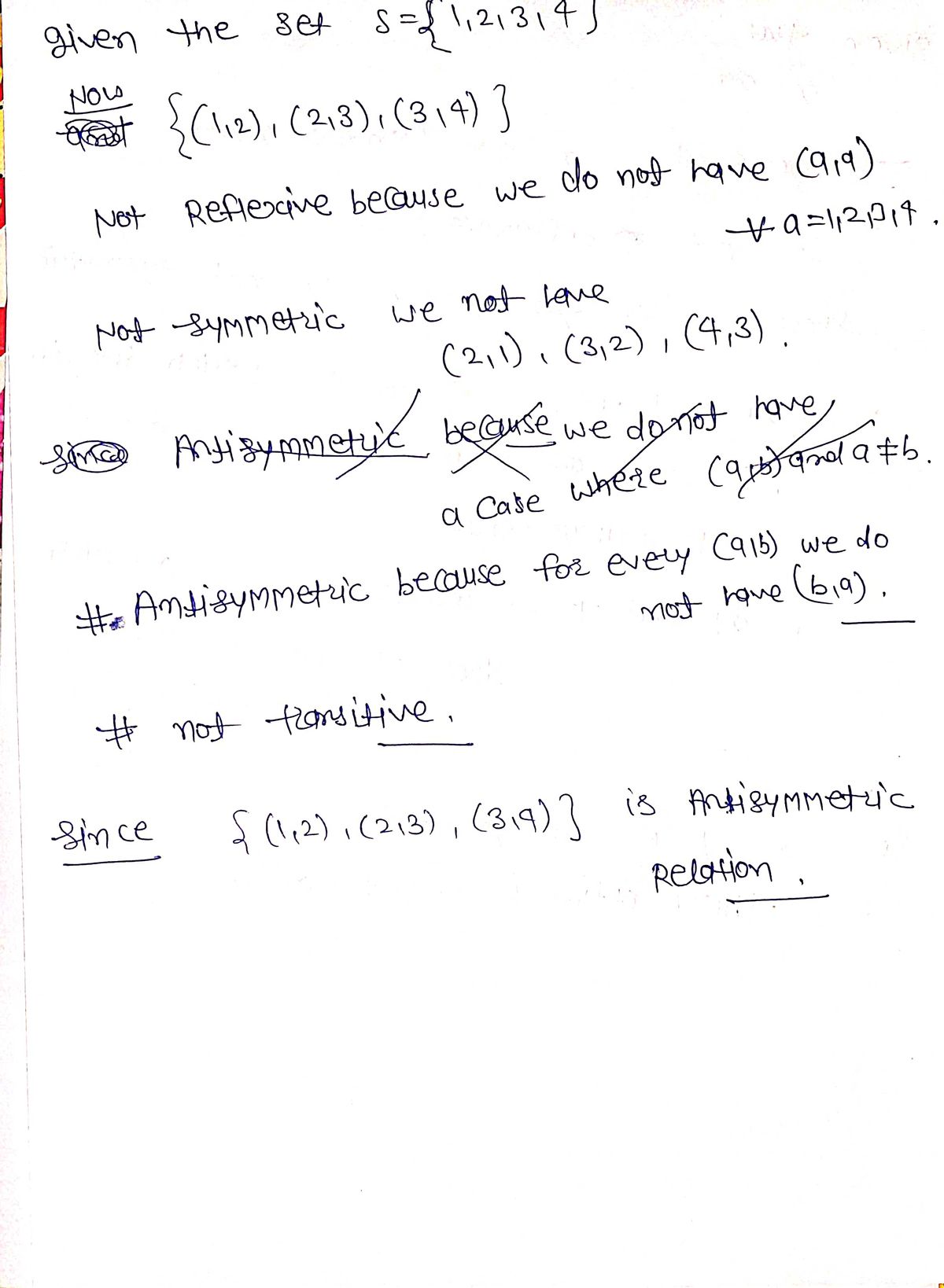{(1, 2), (2, 3), (3, 4)). (Click to select) (Click to select) symmetric none of these properties reflexive transitive antisymmetric
{(1, 2), (2, 3), (3, 4)). (Click to select) (Click to select) symmetric none of these properties reflexive transitive antisymmetric
Advanced Engineering Mathematics
10th Edition
ISBN:9780470458365
Author:Erwin Kreyszig
Publisher:Erwin Kreyszig
Chapter2: Second-order Linear Odes
Section: Chapter Questions
Problem 1RQ
Related questions
Question
100%

Transcribed Image Text:10
Part 2 of 3
Required information
NOTE: This is a multi-part question. Once an answer is submitted, you will be unable to return to this part.
For each of these relations on the set [1, 2, 3, 4), decide whether it is reflexive, symmetric, antisymmetric, or transitive.
{(1, 2), (2, 3), (3, 4)).
(Click to select)
(Click to select)
symmetric
none of these properties
reflexive
transitive
antisymmetric
Expert Solution
Step 1

Step by step
Solved in 2 steps with 1 images

Recommended textbooks for you

Advanced Engineering Mathematics
Advanced Math
ISBN:
9780470458365
Author:
Erwin Kreyszig
Publisher:
Wiley, John & Sons, Incorporated

Numerical Methods for Engineers
Advanced Math
ISBN:
9780073397924
Author:
Steven C. Chapra Dr., Raymond P. Canale
Publisher:
McGraw-Hill Education

Introductory Mathematics for Engineering Applicat…
Advanced Math
ISBN:
9781118141809
Author:
Nathan Klingbeil
Publisher:
WILEY

Advanced Engineering Mathematics
Advanced Math
ISBN:
9780470458365
Author:
Erwin Kreyszig
Publisher:
Wiley, John & Sons, Incorporated

Numerical Methods for Engineers
Advanced Math
ISBN:
9780073397924
Author:
Steven C. Chapra Dr., Raymond P. Canale
Publisher:
McGraw-Hill Education

Introductory Mathematics for Engineering Applicat…
Advanced Math
ISBN:
9781118141809
Author:
Nathan Klingbeil
Publisher:
WILEY

Mathematics For Machine Technology
Advanced Math
ISBN:
9781337798310
Author:
Peterson, John.
Publisher:
Cengage Learning,

